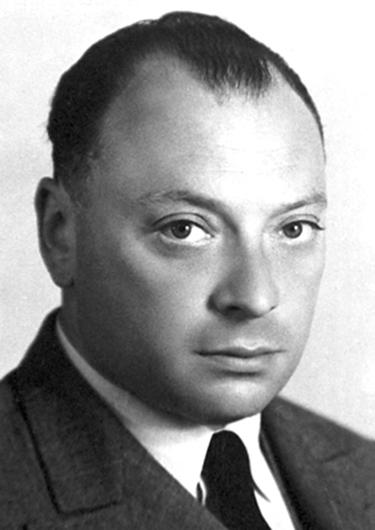| << Chapter < Page | Chapter >> Page > |
All atoms except hydrogen are multiple-electron atoms. The physical and chemical properties of elements are directly related to the number of electrons a neutral atom has. The periodic table of the elements groups elements with similar properties into columns. This systematic organization is related to the number of electrons in a neutral atom, called the atomic number , . We shall see in this section that the exclusion principle is key to the underlying explanations, and that it applies far beyond the realm of atomic physics.
In 1925, the Austrian physicist Wolfgang Pauli (see [link] ) proposed the following rule: No two electrons can have the same set of quantum numbers. That is, no two electrons can be in the same state. This statement is known as the Pauli exclusion principle , because it excludes electrons from being in the same state. The Pauli exclusion principle is extremely powerful and very broadly applicable. It applies to any identical particles with half-integral intrinsic spin—that is, having Thus no two electrons can have the same set of quantum numbers.
No two electrons can have the same set of quantum numbers. That is, no two electrons can be in the same state.

Let us examine how the exclusion principle applies to electrons in atoms. The quantum numbers involved were defined in Quantum Numbers and Rules as , and . Since is always for electrons, it is redundant to list , and so we omit it and specify the state of an electron by a set of four numbers . For example, the quantum numbers completely specify the state of an electron in an atom.
Since no two electrons can have the same set of quantum numbers, there are limits to how many of them can be in the same energy state. Note that determines the energy state in the absence of a magnetic field. So we first choose , and then we see how many electrons can be in this energy state or energy level. Consider the level, for example. The only value can have is 0 (see [link] for a list of possible values once is known), and thus can only be 0. The spin projection can be either or , and so there can be two electrons in the state. One has quantum numbers , and the other has . [link] illustrates that there can be one or two electrons having , but not three.

Notification Switch
Would you like to follow the 'College physics' conversation and receive update notifications?